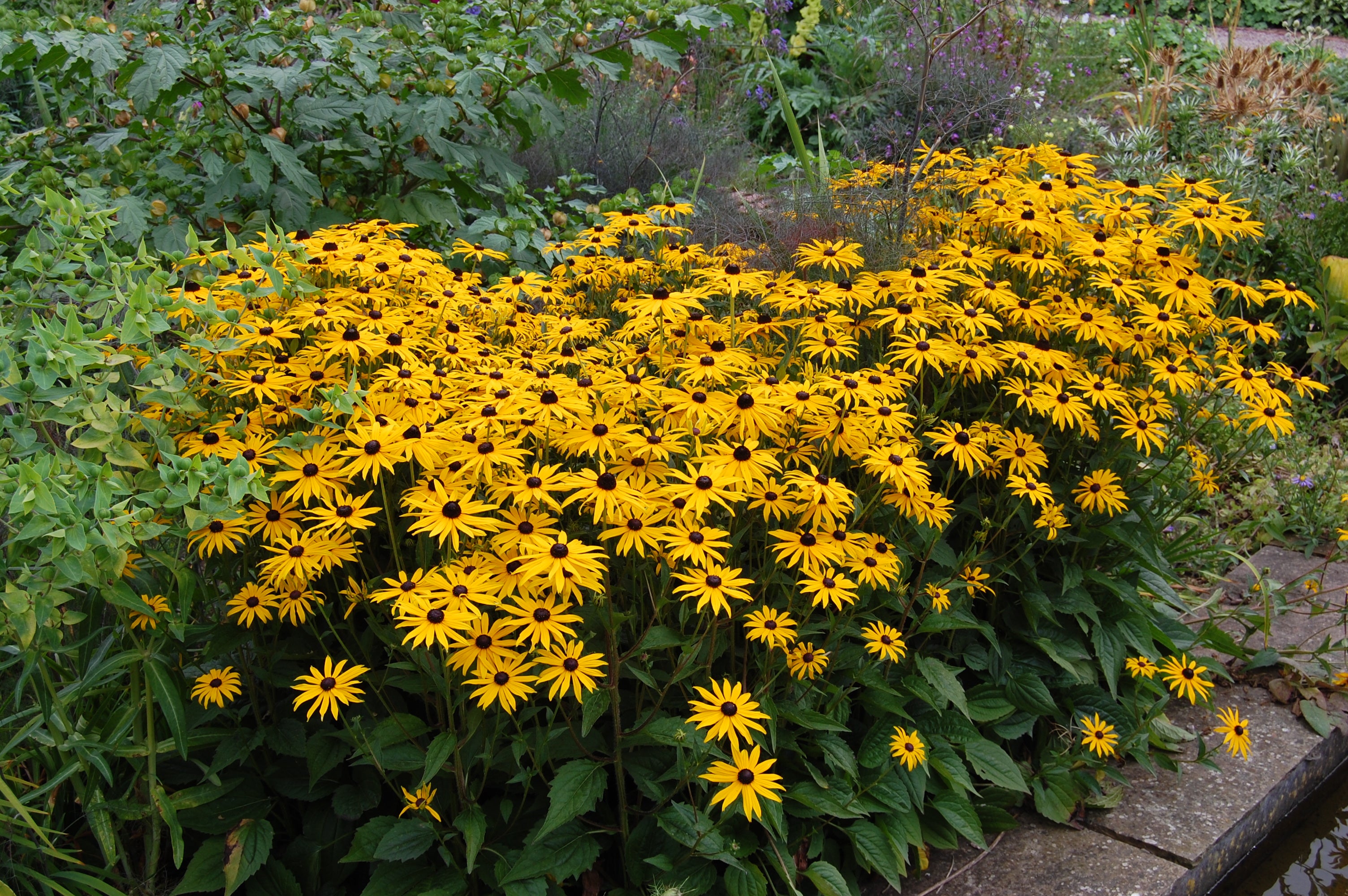Rudbeckia fulgia 'Goldsturm'

Few perennials are as useful as Rudbeckia fulgida. There are a seemingly endless number of yellow daisies for the last few months of the gardening year – nearly all North American in origin, but virtually all are at least shoulder height. The 'Black-eyed Susan' as it is known, is waist-height at most, and so so useful for smaller gardens or 'front of the border' positions and it has particularly good dark-centred flowers.
'Goldsturm' was spotted in a garden in the Czech Sudetenland on the eve of the Second World War, and carried in a rucksack back to the nursery of Karl Foerster on the outskirts of Berlin. Foerster kept his head down during the war (he needed to, as his brother was a leading anti-Nazi critic who had to flee Germany), keeping his collection of plants safe, but also propagating this wonderfully long-flowering plant, with its rich golden yellow.
With peace, 'Goldsturm' soon found its way across a divided Germany, and thence to the rest of us. A young horticulture student who had emigrated from East Germany to the US, Wolfgang Oehme, gave it pride of place in the spectacular planting schemes that he and his business partner, James van Sweden, made around Washington in the 1970s and 1980s. Few plants are as spectacular when mass-planted, and it arguably helped bring about a revolution in American garden design. Personally, I think the odd one mixed in with other quieter plants is just as effective.
Full sun, reasonable fertility and moisture keep 'Goldsturm' happy. Its only downside is that its steadily expanding clumps are not that effective at keeping weed seedlings out, but that's a small price to pay for a truly great plant.
Dr Noel Kingsbury







